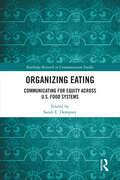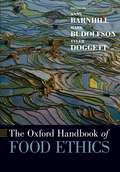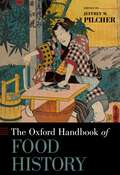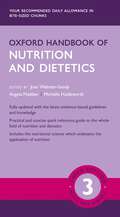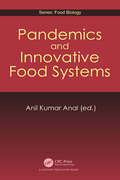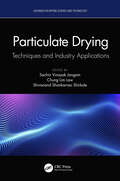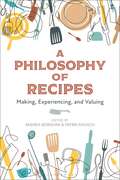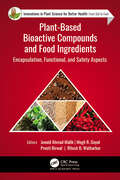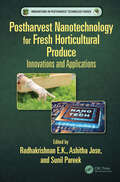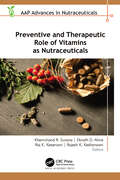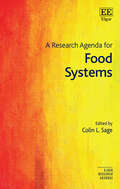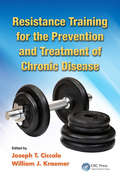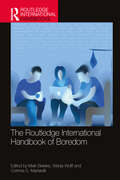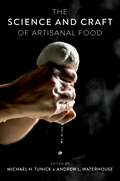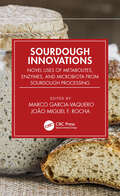- Table View
- List View
Organizing Eating: Communicating for Equity Across U.S. Food Systems (Routledge Research in Communication Studies)
This book develops "organizing eating" as an organizational-communication centered framework for understanding how communication and power combine to actively shape eating and working in the U.S. food system. Drawing together established scholars, the book sheds light on how the interconnected aspects of power are communicative in nature, shaping and constraining the possibilities for organizing across the food system. The chapters provide grounded insight into the role of racism, corporate and state power, food cooperatives, urban farm systems, food policy, and labor practices, drawing attention to the pathways needed to pursue more equitable food systems. Providing readers with a set of useful critical conceptual tools and an understanding of communication frameworks, chapters identify common principles for critical organizing within the food movement and addresses the relevance of the COVID-19 pandemic and the national uprising against anti-Black violence for understanding the urgent possibilities of food justice. This cohesive collection of cutting-edge scholarship will be of interest to organizational communication scholars, critical/cultural communication scholars, environmental communication scholars, and health communication scholars; and the interdisciplinary fields of environmental studies, agriculture and food studies, and organization and labor studies.
The Oxford Handbook of Agricultural History (Oxford Handbooks)
Agricultural history has enjoyed a rebirth in recent years, in part because the agricultural enterprise promotes economic and cultural connections in an era that has become ever more globally focused, but also because of agriculture's potential to lead to conflicts over precious resources. History is replete with stories of armies standing or falling as a result of their supply of agriculturally produced commodities. Civilizations have likewise succumbed because of famine or crop-related pestilence, highlighting the critical nature of agriculture to both regional and global society. The importance and fragility of agricultural systems will come into much greater focus because of climate change in the twenty-first century, something farmers the world over have begun to reckon with. As its implications are manifested in droughts and floods that hamper crop production, urban people will become ever more conscious of their own reliance upon agriculture. The contemporary critical evaluation of agriculture reflects a transition from a framework that celebrated the positive aspects of the evolution of agriculture to one that also explores its negative implications, such as the emergence of intensive and extractive agriculture that has worked to the detriment of indigenous peoples and disrupted traditional political economies. The Oxford Handbook of Agricultural History reflects this rebirth and examines the wide-reaching implications of agricultural issues, bringing together the many historiographical traditions within geographic regions across the world that intersect either directly or indirectly in terms of agricultural history. Contributors to this volume include historians from around the world and specialists in European, American, African, Middle East, Russian, and Asian history. Essays touch on the green revolution, the development of the Atlantic slave plantation, the agricultural impact of the American Civil War, the rise of scientific and corporate agriculture, and modern exploitation of agricultural labor. The Oxford Handbook of Agricultural History is an essential volume for those interested in the myriad ways that agricultural systems affect our world.
The Oxford Handbook of Food Ethics (Oxford Handbooks)
Academic food ethics incorporates work from philosophy but also anthropology, economics, the environmental sciences and other natural sciences, geography, law, and sociology. Scholars from these fields have been producing work for decades on the food system, and on ethical, social, and policy issues connected to the food system. Yet in the last several years, there has been a notable increase in philosophical work on these issues-work that draws on multiple literatures within practical ethics, normative ethics and political philosophy. This handbook provides a sample of that philosophical work across multiple areas of food ethics: conventional agriculture and alternatives to it; animals; consumption; food justice; food politics; food workers; and, food and identity.
The Oxford Handbook of Food History (Oxford Handbooks)
Food matters, not only as a subject of study in its own right, but also as a medium for conveying critical messages about capitalism, the environment, and social inequality to diverse audiences. Recent scholarship on the subject draws from both a pathbreaking body of secondary literature and an inexhaustible wealth of primary sources--from ancient Chinese philosophical tracts to McDonald's menus--contributing new perspectives to the historical study of food, culture, and society, and challenging the limits of history itself. The Oxford Handbook of Food History places existing works in historiographical context, crossing disciplinary, chronological, and geographic boundaries while also suggesting new routes for future research. The twenty-seven essays in this book are organized into five sections: historiography, disciplinary approaches, production, circulation, and consumption of food. The first two sections examine the foundations of food history, not only in relation to key developments in the discipline of history itself--such as the French Annales school and the cultural turn--but also in anthropology, sociology, geography, pedagogy, and the emerging Critical Nutrition Studies. The following three sections sketch various trajectories of food as it travels from farm to table, factory to eatery, nature to society. Each section balances material, cultural, and intellectual concerns, whether juxtaposing questions of agriculture and the environment with the notion of cookbooks as historical documents; early human migrations with modern culinary tourism; or religious customs with social activism. In its vast, interdisciplinary scope, this handbook brings students and scholars an authoritative guide to a field with fresh insights into one of the most fundamental human concerns.
Oxford Handbook of Nutrition and Dietetics (Oxford Medical Handbooks)
The importance of nutrition in the prevention and treatment of disease and the maintenance of good health is being increasingly recognised. Nutrition is an area that all health professionals need to be aware of and yet one in which few are specifically trained. However it is now becoming a valued topic in many curricula. The Oxford Handbook of Nutrition and Dietetics makes this information more accessible to dieticians, doctors, nurses, nutritionists, and other healthcare professionals by providing a practical, easily accessible, concise and up-to-date evidence-based guide in a user-friendly portable handbook. It covers the entire life cycle from preconception to old age. As the general public is increasingly aware of the food they eat and the role nutrition plays in health and disease, health professionalsmust have the kind of knowledge in this book at their fingertips.
Pandemics and Innovative Food Systems (Food Biology Series)
The debate on health, nutrition and food security could not have arisen at a more opportune time. The recent pandemic has given rise to increased food and nutrition insecurity for individuals, families, and communities. The crisis threatened the food security and nutrition of millions of people, many of whom were already suffering. We face possible disruptions to the functioning of food systems, with severe consequences for health and nutrition. Pandemics create a greater burden for poorer countries and countries since they are already pressure of inadequate food supplies. With concerted action, we can not only avoid some of the worst impacts but do so in a way that supports a transition to more sustainable food systems that are in better balance with nature and that support healthy diets – and thus better health prospects for all. This book aims to highlight the impact of pandemics in food systems and nutrition security. It draws on the experience from the past and present pandemics to better prepare the world for future crises.
Particulate Drying: Techniques and Industry Applications (Advances in Drying Science and Technology)
In the process industry, understanding the unit operation of particulate drying is imperative to yield products with desired properties and characteristics and to ensure process safety, optimal energy efficiency and drying performance, as well as low environmental impact. There are many techniques and tools available, which can cause confusion. Particulate Drying: Techniques and Industry Applications provides an overview of various particulate drying techniques, their advantages and limitations, industrial applications, and simple design methods. This book: • Covers advances in particulate drying and their importance in the process industry • Highlights recent developments in conventional drying techniques and new drying technologies • Helps readers gain insight into selecting the appropriate drying techniques for a particular product • Summarizes various applications from a wide range of industries, including chemical, food, pharmaceutical, biotech, polymer, mineral, and agro-industries • Projects future research trends and demands in particulate drying This book serves as a reference for process and plant engineers as well as researchers in the fields of particulate processing, mineral processing, food processing, chemical engineering, and mechanical engineering, especially those involved in the selection of drying equipment for particulate solids and R&D of drying of particulate materials.
Pear (Large Print)
This is an image of a sweet and juicy pear, with its stalk and two leaves. It is shown slightly larger than life-size. There is a locator dot shown, which will be at the top left of the page when the image is the correct way up.The two leaves are in the top centre of the page, attached to the stalk below. Down the page from the stalk is the fruit. It is small at the top and fat at the bottom. At the very bottom of the pear is a little shrivelled bit: the remains of the flower it has grown from.
Pear (UEB Contracted)
This is an image of a sweet and juicy pear, with its stalk and two leaves. It is shown slightly larger than life-size. There is a locator dot shown, which will be at the top left of the page when the image is the correct way up.The two leaves are in the top centre of the page, attached to the stalk below. Down the page from the stalk is the fruit. It is small at the top and fat at the bottom. At the very bottom of the pear is a little shrivelled bit: the remains of the flower it has grown from.
Pear (UEB Uncontracted)
This is an image of a sweet and juicy pear, with its stalk and two leaves. It is shown slightly larger than life-size. There is a locator dot shown, which will be at the top left of the page when the image is the correct way up.The two leaves are in the top centre of the page, attached to the stalk below. Down the page from the stalk is the fruit. It is small at the top and fat at the bottom. At the very bottom of the pear is a little shrivelled bit: the remains of the flower it has grown from.
A Philosophy of Recipes: Making, Experiencing, and Valuing
This volume addresses the nature and identity of recipes from a cross-disciplinary perspective. Contributors study the values and norms guiding the naming, production, and consumption of recipes, scrutinizing their relationship to territory, makers, eaters, and places of production. Along the road, they uncover the multifaceted conceptual and value-laden questions that a study of recipes raises regarding cultural appropriation and the interplay between aesthetics and ethics in recipe making.With contributors specializing in philosophy, law, anthropology, sociology, history, and other disciplines, this volume will be of vital importance for those looking to understand the complex nature of food and the way recipes have shaped culinary cultures throughout history.
Pineapple (Large Print)
In the middle of the page is an image of a pineapple shown slightly smaller than life-size. There is a locator dot shown, which will be at the top left of the page when the image is the correct way up. The body of the fruit is in the bottom half of the page and the leaves are at the top.The green leaves of the pineapple splay out from the top of the fruit in the middle of the page. They have very sharp serrated edges. Down the page is the orange fruit of the pineapple. It is oval-shaped and covered in sharp pointy segments.
Pineapple (UEB Contracted)
In the middle of the page is an image of a pineapple shown slightly smaller than life-size. There is a locator dot shown, which will be at the top left of the page when the image is the correct way up. The body of the fruit is in the bottom half of the page and the leaves are at the top.The green leaves of the pineapple splay out from the top of the fruit in the middle of the page. They have very sharp serrated edges. Down the page is the orange fruit of the pineapple. It is oval-shaped and covered in sharp pointy segments.
Pineapple (UEB Uncontracted)
In the middle of the page is an image of a pineapple shown slightly smaller than life-size. There is a locator dot shown, which will be at the top left of the page when the image is the correct way up. The body of the fruit is in the bottom half of the page and the leaves are at the top.The green leaves of the pineapple splay out from the top of the fruit in the middle of the page. They have very sharp serrated edges. Down the page is the orange fruit of the pineapple. It is oval-shaped and covered in sharp pointy segments.
Pizza (Large Print)
This is a picture of a pizza. There is a locator dot shown, which will be at the top left of the page when the image is the correct way up. It is roughly circular but at the bottom left someone has cut out a triangular piece ready to eat. Starting at the outside of the pizza the edge of the bread base can be found, then moving towards the centre there is the tomato paste and then in the middle is the cheesy topping. On the topping there are square pineapple pieces, slices of mushroom and slices of round pepperoni sausage.
Pizza (UEB Contracted)
This is a picture of a pizza. There is a locator dot shown, which will be at the top left of the page when the image is the correct way up. It is roughly circular but at the bottom left someone has cut out a triangular piece ready to eat. Starting at the outside of the pizza the edge of the bread base can be found, then moving towards the centre there is the tomato paste and then in the middle is the cheesy topping. On the topping there are square pineapple pieces, slices of mushroom and slices of round pepperoni sausage.
Pizza (UEB Uncontracted)
This is a picture of a pizza. There is a locator dot shown, which will be at the top left of the page when the image is the correct way up. It is roughly circular but at the bottom left someone has cut out a triangular piece ready to eat. Starting at the outside of the pizza the edge of the bread base can be found, then moving towards the centre there is the tomato paste and then in the middle is the cheesy topping. On the topping there are square pineapple pieces, slices of mushroom and slices of round pepperoni sausage.
Plant-Based Bioactive Compounds and Food Ingredients: Encapsulation, Functional, and Safety Aspects (Innovations in Plant Science for Better Health: From Soil to Fork)
This new book discusses plant-derived bioactive compounds, covering their sources, biological effects, health benefits, and potential prevention and treatment properties for multifactorial diseases. It first describes in detail how encapsulation methods and plant-based materials may be used in a variety of ways, covering the concepts, advantages, and techniques for encapsulating bioactives based on cereals, spices, and coffee. The volume also looks at the functional aspects of plant-based foods and nutraceutical-based functional food design. The role of functional foods in food safety and industrial food safety issues and techniques for monitoring food quality and safety are also addressed.
Postharvest Nanotechnology for Fresh Horticultural Produce: Innovations and Applications (Innovations in Postharvest Technology Series)
Food scarcity and insecurity is an alarming issue throughout the world. Postharvest loss due to both mechanical damage and microbial spoilage significantly influences the shelf life and hence the availability of agricultural produce. Once initiated, the microbial spoilage can make bulk quantity of a given agricultural product unacceptable for human consumption, and several methods have already been used to try to manage this. Considering the limited success of the available methods, there is increasing interest in exploring nanotechnological methods. These methods are being considered for both the development of various platforms for antimicrobial/barrier packaging applications that minimize the contact of agricultural produce with the external environment, and also for design sensors to ensure food safety and quality. The impact of various nano-systems developed through material engineering on the shelf-life enhancement and storage of fresh horticultural produce will have revolutionary effects on post-harvest management in the coming years. Hence, Postharvest Nanotechnology for Fresh Horticultural Produce has been edited to advance understanding of material development, intelligent selection of nanomaterials to ensure the nontoxic nature, and future perspectives of nanotechnology on postharvest produce. This includes various types of nanoparticles exploited for the postharvest management, their mechanism of action, varied applications and material engineering, along with natural products including essential oils and plant bioactives, modelling of various tailor-made materials to meet the required properties of the packed food, advancements in the nanotechnological applications for the minimally processed food, and the toxicity concerns. Key Features: · Describes advances in nanotechnology for postharvest management · Includes extensive details on the applications of material engineering for post-harvest applications using nanotechnology and future aspects · Provides extensive data on the types of nanomaterials used and the fabrication methods employed for the design of tailor-made products for the post-harvest management This book reviews the current scientific advancements and future prospects of the nanotechnological interventions in meeting the quality and quantity standards of the horticultural produce and minimally processed food and will be a valuable reference for beginners, researchers, subject experts, and industrialists.
Preventive and Therapeutic Role of Vitamins as Nutraceuticals (AAP Advances in Nutraceuticals)
This new book provides informative coverage of recent breakthroughs in vitamins and their ability to prevent disease, manage health issues, and treat chronic illness. It describes the beneficial effects of vitamins as nutraceuticals in treating cancer, for improving the immunity of patients with HIV and AIDS, for the treatment of tuberculosis, and for the management of infectious diseases, such as viral infections, microbial infections, and COVID-19. The functional activity of vitamins in brain health and obesity management is also explored for the management, prevention, and delay of hypertension and related problems. The volume also covers vitamins that play a role in neurodegenerative diseases as well as those that can be used for weight loss and obesity, blindness and vision issues, baldness, and skincare issues.
A Research Agenda for Food Systems (Elgar Research Agendas)
Elgar Research Agendas outline the future of research in a given area. Leading scholars are given the space to explore their subject in provocative ways, and map out the potential directions of travel. They are relevant but also visionary.Illuminating the global food system as a highly dynamic set of interconnecting interests and sub-systems that drives rapid technological, societal, and cultural change, this cutting-edge Research Agenda examines the pressing issues that confront food systems, and the emerging responses to them.Chapters from internationally renowned specialists address the pressing issues facing food systems, including the growing concentration and power of large agri-food corporations, the contribution of food production to climate breakdown, the exploitation of agricultural labour, food poverty, and the reconfiguration of animal bodies. Reviewing possible ‘solutions’ chapters then examine the potential for a digital agricultural revolution, the contribution of alternative proteins in dietary change, and the emergence of regionalized and regenerative food systems. The book concludes with a look towards hybrid foodscapes, exploring how design can help us to re-imagine our stake in food systems of the future. Interdisciplinary, holistic, and accessible in its approach, this innovative book will prove vital to students and scholars engaged in the study of food – from production to consumption – as well as those concerned with policymaking in the fields of public health and nutrition, food governance, sustainability, and environmental advocacy.
Resistance Training for the Prevention and Treatment of Chronic Disease
Current evidence supports the use of resistance training as an independent method to prevent, treat, and potentially reverse the impact of numerous chronic diseases. With physical inactivity one of the top risk factors for global mortality, a variety of worldwide initiatives have been launched, and resistance training is promoted by numerous organi
The Routledge International Handbook of Boredom (Routledge International Handbooks)
This comprehensive text is a unique handbook dedicated to research on boredom. The book brings together leading contributors from across three continents and numerous fields to provide an interdisciplinary exploration of boredom, its theoretical underpinnings, its experiential properties, and the applied contexts in which it occurs.Boredom is often viewed as a mental state with little utility, though recent research suggests that it can be a powerful motivator of human behavior that shapes our actions in many ways. The book examines boredom from a range of perspectives and is comprised of three parts. Part I delves into the theoretical approaches to boredom, presenting methods for its measurement, explaining when and why boredom occurs, and scrutinizing the impact it has on our behavior. Part II focuses on the psychological and neural properties of boredom and its associations with a multitude of mental and interpersonal processes, such as self-control, mind-wandering, flow, and aggression. Part III presents boredom in practical contexts like school and work, and sheds light on its role for health-related behaviors, psychosocial well-being, and aesthetic experiences. The book concludes by summarizing the state of boredom research, identifying promising areas for future research, and providing directions for how research on boredom can be advanced. As the authoritative book on boredom, this handbook is an essential resource for students and researchers of psychology, sociology, education, sport science, and computer science.
The Science and Craft of Artisanal Food
You are what you eat, and today's consumers care about the origins of their food. Artisanal food embodies those concerns, tailoring processes to raw materials to achieve the artisan's vision of the perfect product. The Science and Craft of Artisanal Food describes the science behind small and large-scale production of food, distinguishing artisanal production from normal commercial practice. Each chapter is written in a collaboration between scientists and artisans, comparing the production methods used to create beer, wine, chocolate, coffee, cheese, honey, olive oil, and fruits and vegetables. These expert contributors highlight the differences in practices that cause artisanal food to vary in composition, flavor, and texture from mass-produced food. Milk from particular breeds, grapes adapted to the local climate, olives and cacao from a historically important cultivar, or coffee beans from a specific climate can make all the difference. This book reveals the factors that make a difference in each product, and teaches readers how to assess the producer's messages to evaluate their authenticity.
Sourdough Innovations: Novel Uses of Metabolites, Enzymes, and Microbiota from Sourdough Processing
Sourdough fermentation was probably one of the first microbial processes employed by mankind for the production and preservation of food. This practice is still widely used worldwide due to the distinct sensorial and health properties attributed to these products. Traditional sourdough bread is achieved by spontaneous fermentations, leading to natural selections of microorganisms (mainly yeast and lactic acid bacteria) with health benefits for the consumers’ microbiota. However, multiple opportunities are currently underexploited through the entire sourdough value chain. Sourdough Innovations: Novel Uses of Metabolites, Enzymes, and Microbiota from Sourdough Processing summarizes the latest scientific knowledge and current opportunities of sourdough technology at biomass, microbiota and enzymatic levels described in three distinctive sections. Section I covers the fermentation process of cereals and non-cereals to produce sourdough-containing compounds with health-enhancement benefits. Section II includes novel advances in sourdough enzymology, and last, Section III explores various applications of sourdough microbiota as antimicrobial and probiotic microorganisms and opportunities to be included in both food and non-food applications. Key Features: Includes extensive information on the use of innovative or emerging technologies aiming to promote circular exploitation systems. Promotes the full use of the cereal and non-cereal sourdough metabolites. Covers the functionality of sourdough microorganisms and functional compounds, and future exploitation of some of them in the field of nutraceuticals or functional foods. Sourdough Innovations is unique in its examination of health beneficial compounds through the downstream processing of sourdough from cereals, microbiota, and enzymes. It is a great source for academic staff and scientists within the broad area of food science who are researching, lecturing, or developing their professional careers in food microbiology, food chemistry, food processing, and food technology, including bio-process engineers interested in the development of novel technological improvements in sourdough processing.
